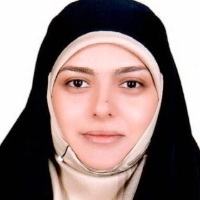Identifying the management features of student scientific social network from the professionals' perspective
The use of social media is expanding among students and different age groups. According to the published statistics, 67% of Iranian users of social networks are 12 to 17 years old. These people are of school age and most of them are students. Due to the few activities in the field of design and development of scientific social network for this age group, the need to pay attention to the design and implementation of social networks for students according to their needs and based on the values of the Iranian society is felt more than ever. The purpose of this study is to identify the essential features of the student scientific social network at three levels: classroom, general and games and five management capabilities including identity information management, content management, communication management, search management and information management. Based on the aforementioned purpose, one question and four hypotheses were made.
As applied research, this study was carried out using exploratory mixed methods (qualitative-quantitative). In the qualitative stage, observation and structured interview were used as the basis of collecting data. The international scientific social networks were observed to develop the draft of interview questions and the relevant documents. To conduct the interview, a sample of 15 experts were selected purposefully and exposed to the structured interview. Finally, based on an analysis of the content of the social networks and the data collected from the interviews, management capabilities and their specific indicators were categorized. In the quantitative section, the research method was surveying and the data collection tool was a questionnaire. The opinions of two groups, including 15 experts of the previous stage of the study and 43 information technology officials of smart schools in Tehran regarding the importance of the indicators obtained for each of the management capabilities, were collected and prioritized. To validate the collected data in the qualitative section, the review method both by the interviewees and the peers was used. In the quantitative section, the content validity was formally approved by the experts and the reliability of the questionnaire was confirmed by Cronbach’s alpha coefficient.
The identified indicators for managerial capabilities in the main sections of the student scientific social network include 36 indicators in the classroom section, 37 indicators in the general section and 20 indicators in the game section. In each of the tripartite sections, the indicators related to the quintuple managerial capabilities were categorized. 11 indicators related to identifying information management are common to all three sections. The findings of the study show the importance of all indicators identified in the main sections of the student scientific social network. The highest average score obtained is related to the game section with an average of 8.66 versus an average of 8.30 for the general section and 8.45 for the classroom section. However, the degree of importance of those indicators is not the same for the respondents, and, accordingly, the indicators were prioritized. The total score of the indicators of the game section is more than the two general and classroom sections and the game capabilities can be used to advance educational goals. Moreover, it is possible to use the game factors and the capabilities that have been found in this study to further strengthen and support the students’ curriculum and general education.
The presence of appropriate indicators for the use of information literacy capabilities in the scientific social network, as well as the use of motivational and playful factors such as point wins can help to increase student participation in educational activities. The possibility of sharing learning problems, class participation in content production, providing information about the activities of friends and groups, the possibility of defining competitions and urban challenges, the possibility of sharing social issues and proposing challenges and competitions based on interests which, in this study, have been recommended as appropriate indicators in different sections of social network, can help in strengthening group participation, project-oriented learning, and group problem-solving. Also, sharing and communication capabilities can provide different students with equal opportunities to grow and learn. The framework proposed in this research can be used to evaluate the existing student scientific social networks. It can also provide a framework for designing and developing software for the student scientific social network based on the local characteristics and imitating the model of similar international student social networks.
- حق عضویت دریافتی صرف حمایت از نشریات عضو و نگهداری، تکمیل و توسعه مگیران میشود.
- پرداخت حق اشتراک و دانلود مقالات اجازه بازنشر آن در سایر رسانههای چاپی و دیجیتال را به کاربر نمیدهد.




